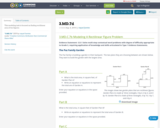
This modeling task is focused on finding rectilinear area of two figures.
- Subject:
- Education
- Elementary Education
- Mathematics
- Measurement and Data
- Material Type:
- Activity/Lab
- Assessment
- Homework/Assignment
- Date Added:
- 11/20/2018

This modeling task is focused on finding rectilinear area of two figures.
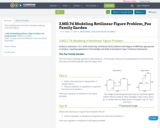
This modeling task is focused on finding rectilinear area of two figures.

This task challenges students to find the area of different sections of a garden and the entire garden. With missing lengths and widths, the students are challenged to apply computation skills to finding missing measurements.
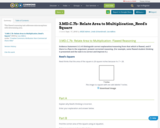
This flawed reasoning task addresses misconceptions with determining area.
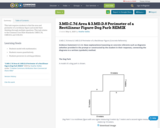
This task requires students to find the area and perimeter of a rectilinear figure and model their thinking through multiple equations. This task relates to the Common Core State Standards: 3.MD.C.7d, 3.MD.D.8, and 3.OA.D.8.
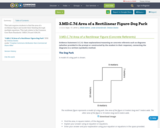
This task requires students to find the area of a rectilinear figure and model their thinking through multiple equations. This task relates to the Common Core State Standards: 3.MD.C.7d and 3.OA.D.8.
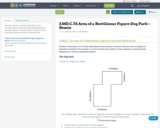
This task requires students to find the area of a rectilinear figure and model their thinking through multiple equations. This task relates to the Common Core State Standards: 3.MD.C.7d and 3.OA.D.8.
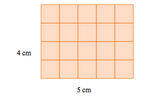
Related to standard AR.Math.Content.3.MD.C.7., this is a multisection lesson for the 3rd grade unit of study on area in relation to multiplication, complete with teacher notes.This lesson is designed to be taught with an 'I Do, We Do, You Do' format. Starting with an introduction slideshow, students will connect multiplication with previous concepts and skills such as repeated addition, skip counting, and equal groups. Then they will see a video and example problems which can be completed together as a class. Allow time for students to read and complete some of these example problems with a partner which will give time for questioning, addressing misunderstandings, and informal interventions. End the lesson with a preview of the next day's independent activity and an exit ticket using a quick image.

Family facing 6th Grade math unit focusing on area and surface area.

In this unit, students learn to find areas of polygons by decomposing, rearranging, and composing shapes. They learn to understand and use the terms “base” and “height,” and find areas of parallelograms and triangles. Students approximate areas of non-polygonal regions by polygonal regions. They represent polyhedra with nets and find their surface areas.

Student facing 6th Grade math unit focusing on area and surface area.
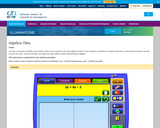
Use tiles to represent variables and constants, learn how to represent and solve algebra problems. Solve equations, substitute in variable expressions, and expand and factor. Flip tiles, remove zero pairs, copy and arrange, and make your way toward a better understanding of algebra.
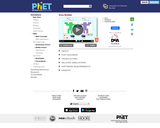
Create your own shapes using colorful blocks and explore the relationship between perimeter and area. Compare the area and perimeter of two shapes side-by-side. Challenge yourself in the game screen to build shapes or find the area of funky figures. Try to collect lots of stars!
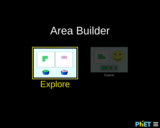
This simulation gives students the opportunity to explore both area and perimeter of 2-dimensional shapes. Students can explore by creating shapes and having the sim calculate the area and perimeter. They can also play a game where the goal is to create a shape with a specified area or area and perimeter, or to calculate the area and/or perimeter of a given shape.

Build rectangles of various sizes and relate multiplication to area. Discover new strategies for multiplying algebraic expressions. Use the game screen to test your multiplication and factoring skills!
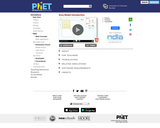
Build rectangles of various sizes and relate multiplication to area. Partition a rectangle into two areas to discover the distributive property.
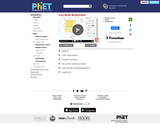
Build rectangles of various sizes and relate multiplication to area. Discover new strategies for multiplying large numbers. Use the game screen to test your problem solving strategies!
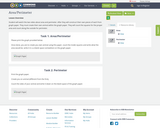
Student will watch the two video about area and perimeter. After they will construct their own pieces of each from graph paper. They must create their own animal within the graph paper. They will count the squares for the proper area and count along the outside for perimeter.
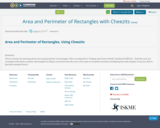
This is a lesson for learning about area and perimeter of rectangles.
This corresponds to "College and Career Ready" standard (3.MD.7a) -- Find the area of a rectangle with whole-number side lengths by tiling it, and show that the area is the same as would be found by multiplying the side lengths.
(I was not able to find that standard here.)
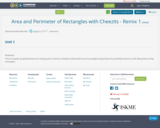
This is a hands-on guided lesson for relating area to factors. Students will model area of rectangles using Cheez-Its and define factors as the dimensions of the rectangles.